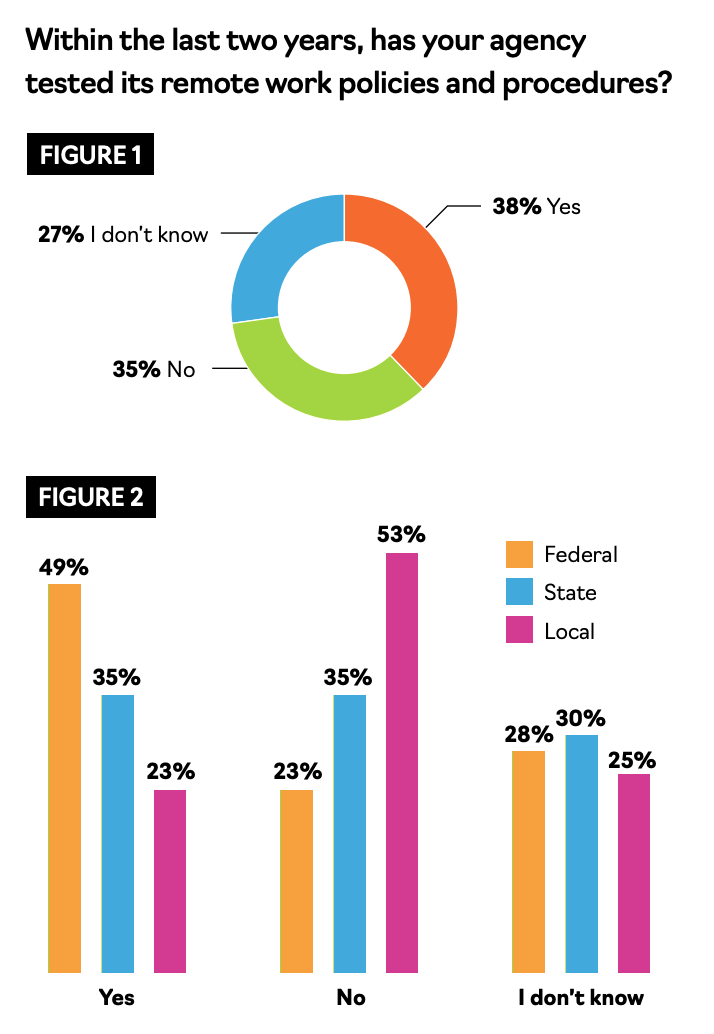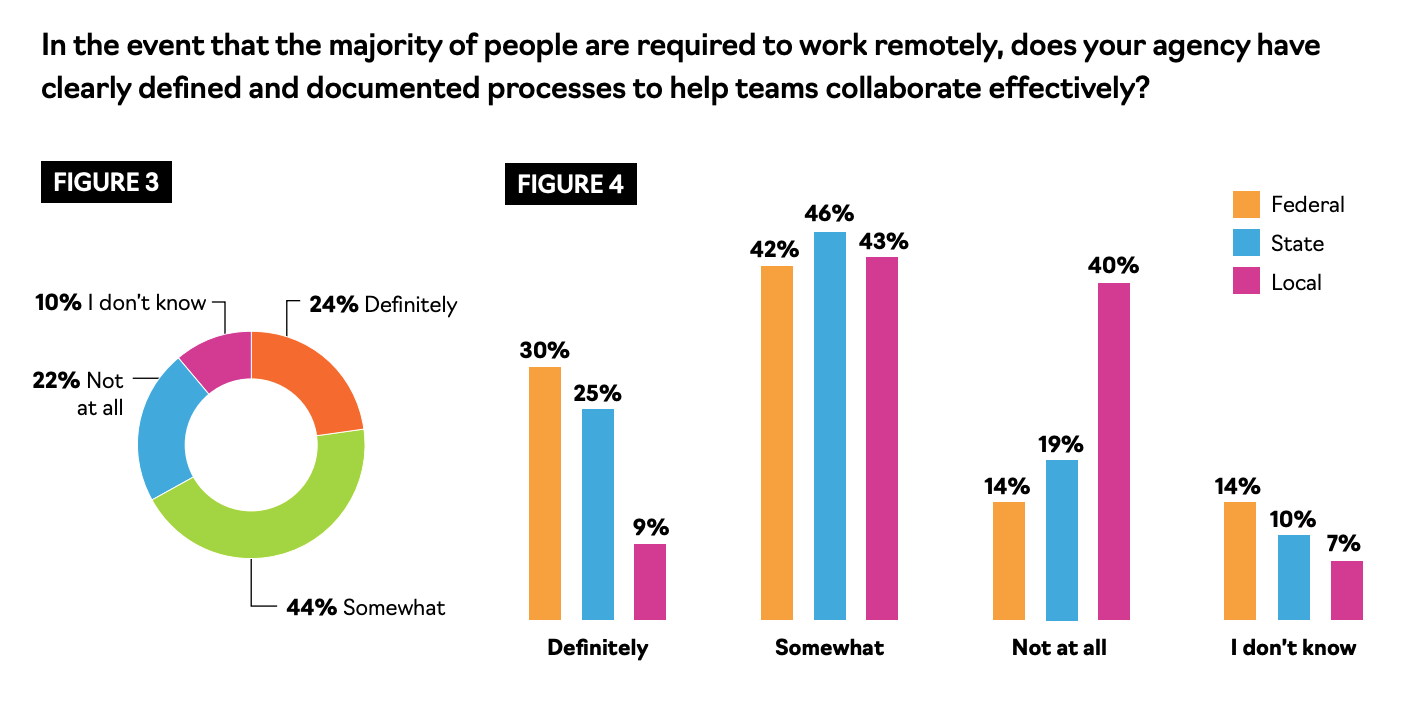In March 2020, GovLoop conducted a community survey on the state continuity of operations (COOP) across the federal, state and local levels. The survey found varying levels of continuity preparedness across different government organizations. Partly, the level of readiness depended on the level of government.

When asked if their agencies had tested remote work policies within the last two years, 38% of overall respondents said yes and 35% said no (See Figure 1). Responses largely depended on whether employees worked for federal, state or local agencies.
Federal civilian agencies, for instance, were the most prepared when it came to testing and documentation. Nearly half of federal respondents attested that their organizations had performed testing in recent years (See Figure 2). They were also the most likely to have defined and documented processes for remote work in the event that the majority of the workforce had to work virtually (See Figure 4).
Local municipalities, on the other hand, were the least likely to have these measures in place.
Over half of employees working in local government, or 53%, said their organizations had not tested remote work policies recently, versus 35% of state employees and 23% of federal employees (See Figure 2).
Local government employees were also the least likely to have any kind of documented processes in the event that the majority of their teams had to work remotely (See Figure 4).
Measures that ameliorate workforce disruptions in a pandemic — such as testing and documenting processes — can often be overlooked amid other priorities that government organizations with limited time and budgets juggle, said Steve Nguyen, Vice President of Public Sector at Citrix. Under normal circumstances, it can feel less essential to test and document procedures to support extreme situations. These risk-based measures, however, make the difference the moment a crisis hits.
Namely, the key benefit of having tested, documented procedures, such as ensuring IT can support telework during COOP, or clearly defining the roles and responsibilities of personnel, is smoother workforce continuity.

Imagine this: You sit down at your kitchen table with everything you need to do your work — your laptop, your Wi-Fi and secure access to the files you need. But you don’t know exactly how to go about working. What is the same and what is different about the processes in the office versus at home? What about during a pandemic? Is that information available to you?
For employees already dealing with the changes in their day-to-day lives, unclarity at work can be even more overwhelming.
“Having these measures in place is not about just saying, ‘I am prepared, and the agency is prepared’ — but it is for the mental health of the employees to know exactly what to do when this happens,” Nguyen said.
For government organizations that have not yet tested or documented all-telework strategies, all is not lost. Leaders can focus on a short-term plan immediately, while putting a long-term COOP telework plan in place, Nguyen said.
In the short term, leaders should tackle two things: tools and management.
First, make sure employees have the tools they need to telework effectively. Remember that kitchen table scenario? You can’t properly assess how to get your work done if first, you don’t have the tools to do your job. Necessary tools can include connectivity, devices, collaboration software — anything the employee needs to perform essential functions and collaborate.
Second, re-strategize how leaders manage and motivate the workforce remotely. It’s back to Management 101, Nguyen said. The pandemic puts the whole workforce in a telework situation that no one has experienced before.
“There are a lot of emotional needs going on during this time period,” Nguyen said. “You have to keep your employees engaged, but you also need to make sure that they’re physically healthy as well as mentally healthy.”
The more agencies can minimize the risks they can control, the more relieved employees will feel in an already stressful situation.
This article is an excerpt from GovLoop’s recent report, “Continuity After COVID-19: Rising to the Challenge of Remote Work.” Download the full report here.





Leave a Reply
You must be logged in to post a comment.